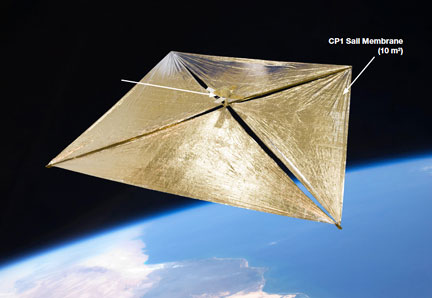 |
| Image by DimentionInfo.com |
The true origin of communications satellites occurred when the Soviet Sputnik was launched in 1957. It paved the way for future launches, and it was the reason why NASA was formed. The first actual communications satellite was launched into space in 1958. This project was named SCORE, which is a shortened version of Signal Communication by Orbital Relay. It relayed a Christmas message from President Eisenhower. This satellite was in orbit for 12 days before its batteries gave out. The U.S.S.R and the United States started a space race. When their totals were combined, the countries launched 14 satellites in 1959.
In 1960, the United States and the U.S.S.R launched 19 satellites. One of them was the Echo 1, which was mostly famous for influencing the creation of the Telstar satellite. Echo 1 was a passive reflector device, and it could only reflect radiation. Scientists hoped it would serve a valuable purpose, but they quickly abandoned this style of satellite construction. In 1961, 35 satellites were launched by the U.S.S.R and the United States. Both the United Kingdom and Canada joined the race in 1962. This was also the year the Telstar satellite was sent into space. Technical measurements and tests were performed in France, the United States and the United Kingdom. The transmission tests were conducted with telephones, facsimile machines, television signals and telegraphs.
 |
| Infographics by Philip J. Reed |
Throughout the late 1960s, satellites were launched over the Pacific, Atlantic and Indian oceans. By 1970, coverage existed in almost all areas of the Earth. In 1974, the ATS-6 experimental satellite was launched by NASA. It was history's first three-axis stabilized geostationary communications satellite. Satcom 1 was launched one year later. This device was vital for helping early cable channels perform better. Channels such as HBO and TBS, which was WTBS then, were positively affected.
 |
| Image by radio-electronics.com |
Satellite improvements continued slowly until the 1990s. NASA experimented with on-board processing and storage. They also tried using spot beams and digital transmissions in 1993. These experiments allowed satellites to use the spectrum more efficiently, communicate easier and overcome rain fade. With the cooperation of an international organization and 130 governments, Intelsat and Inmarsat were formed. All nations are able to use these satellite networks. By 1997, Intelsat had a total of 19 satellites in orbit. These improvements led to broadband satellites. Many modern companies are trying to launch their own devices. Motorola launched 66 satellites to create the Iridium constellation, but the satellite service was not as popular as they anticipated. They sold Iridium in 2001.
 |
| Image by SatNews.com |
In today's modern world, satellite communications will be traveling a new path. About $50 billion has been funded to make satellites mainstream devices over the next several years. This will take them out of the shadows and into the spotlight. Companies such as Alcatel and Motorola will be supporting this endeavor. Satellites of the future will allow mobile phones to work almost anywhere in the world and will provide high-speed data access across the globe.
Article and InfoGraphics by:




